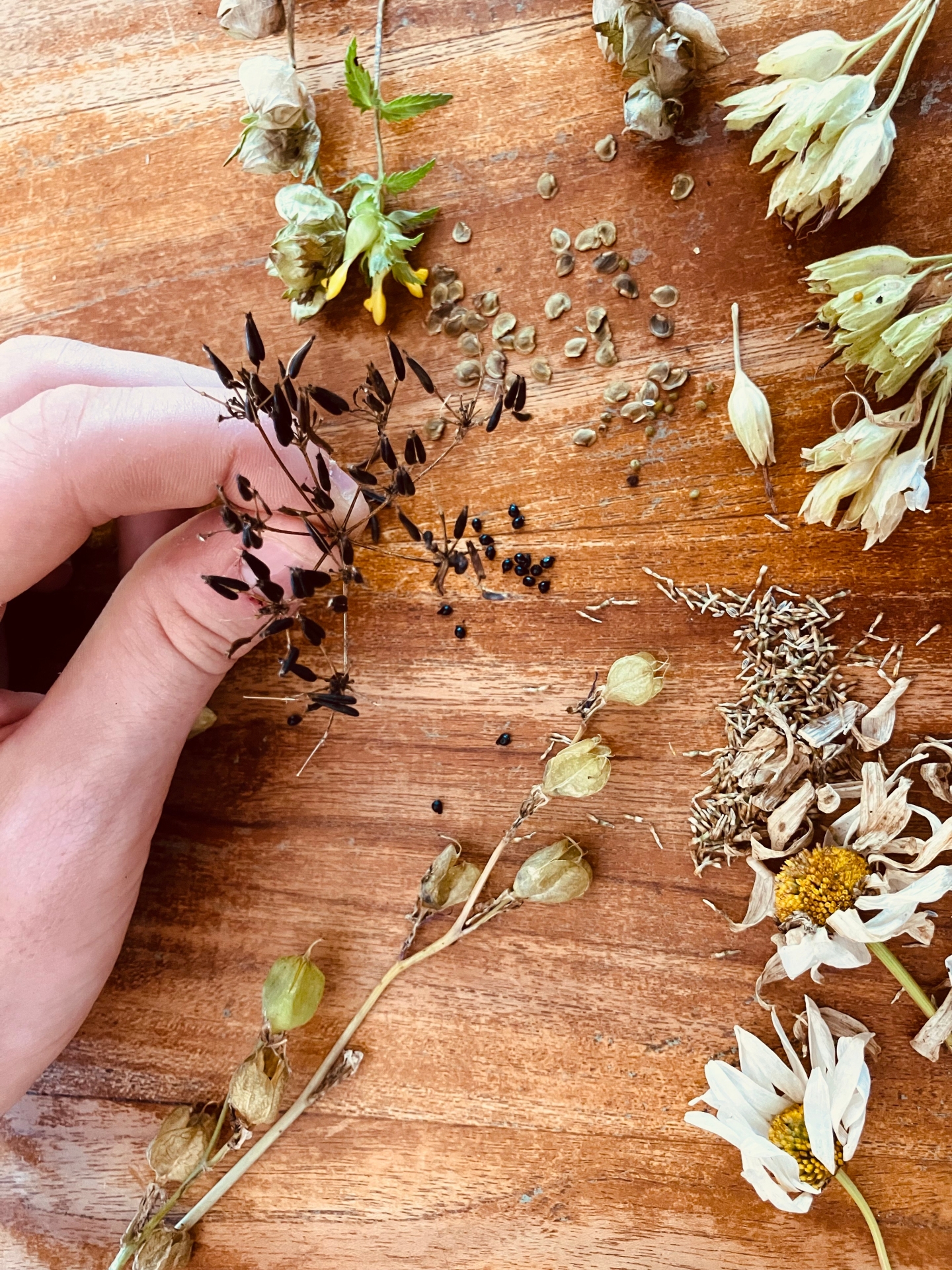
Last week I spent a balmy, late summer evening in the great outdoors and learned a little bit more about the natural heritage of my surroundings.
Spending most of my days indoors, at a desk, the chance to be out and about in the ‘lungs of Callan,’ with good company and the possibility to learn a new skill, was a chance not to be missed.
So, I tagged along on an evening dedicated to seed saving. I may have joked beforehand that I was not intending to save their ‘souls’, but the joke was on me when, along the way, not only did I learn about the inherent intelligence in the genes of wildflowers, but they might have also acted like a balm to my own soul.
READ MORE KILKENNY VIEWS AND OPINION HERE
The Seed Saving walk through Callan’s Abbey Meadow and Moat Field was an eye opening peak into the world of nature, the wildflowers, plants and grasses that are all around us and that we take for granted.
Organised at part of Heritage Week, the event was led by Monica Fleming, who was a font of knowledge. Surrounded by our group of experienced and ‘give it a go’ gardeners and nature-lovers, Monica took us through the basics of seed saving before letting us loose in the wild to practice our new skills.
Put simply, seed saving is exactly what it sounds like. As plants finish blooming and the blooms and fruits start to dry out, what is left is the seed of the plant that can be used to grow more of the same plant. Wildflowers will cast their seeds into nature without any help, but with a little care those seeds can be harvested and replanted by us.
Seed saving is an ancient practice, through which humans and crops evolved together for centuries. Seed selection and plant genetics over that time influence what we eat today.
Monica showed us a range of different wild flowers and their seeds, where to find them (not always as easy as you think!) and demonstrated the techniques used to separate the seeds from the chaff.
Important to know is how to judge a seed is ‘ripe’ to be saved. Too green or wet and they probably won’t germinate when planted. How to go about this, then how to save the seeds at home, was all covered. Many wildflowers will have ‘ripe’ seeds now and can be planted back into the ground now, for next year.

One of the many interesting lessons of the evening came not from our tutor but from the plants themselves.
As Monica showed us plants like knapweed and mullein she explained the genius of nature in pacing itself. At the same time the plants are blooming, dying back and creating seed heads. Not all of the flowers on a plant bloom at once.
Somehow nature has learned to be clever, that it doesn’t need to do everything all at once. And it’s not just the growing plants that demonstrate this. The seeds that are saved won’t all germinate and grow at the same time. Some will, of course, grow next year. But a significant percentage will remain dormant for a year, some more for many years. The poppy seed can germinate up to 50 years after the flower it came from bloomed!
The poppy seeds that grow in a few years time will be just as beautiful as those that grow next year.
In the simplicity of nature there is a lesson to be learned by all of us who try to live lives that may be very busy — not everything has to be achieved at once. Everything comes in its own good time.
Subscribe or register today to discover more from DonegalLive.ie
Buy the e-paper of the Donegal Democrat, Donegal People's Press, Donegal Post and Inish Times here for instant access to Donegal's premier news titles.
Keep up with the latest news from Donegal with our daily newsletter featuring the most important stories of the day delivered to your inbox every evening at 5pm.